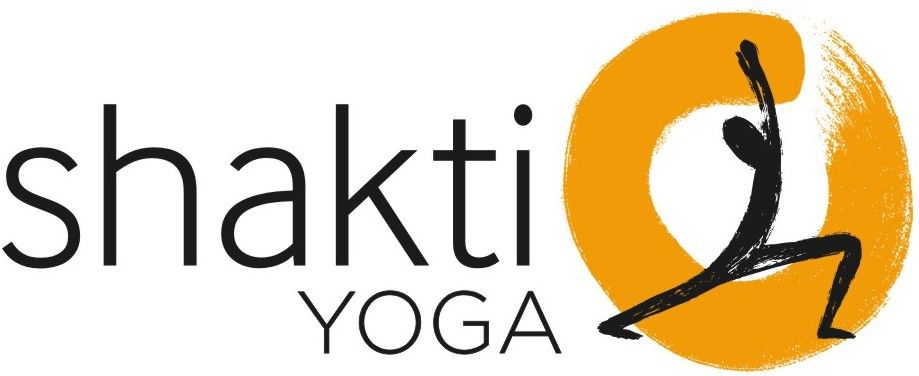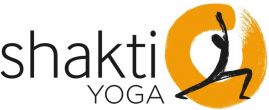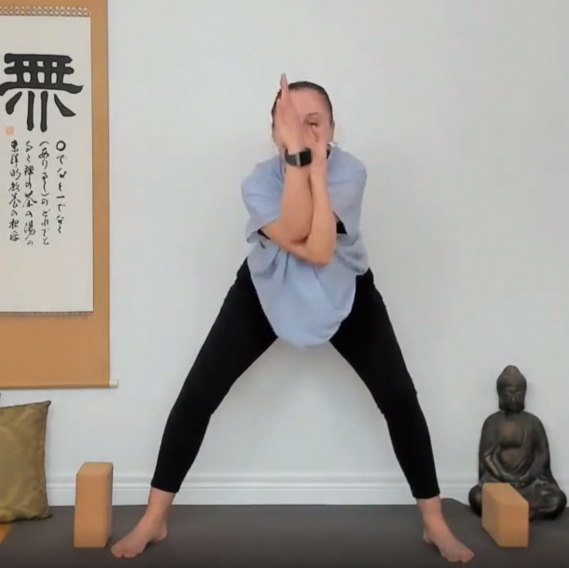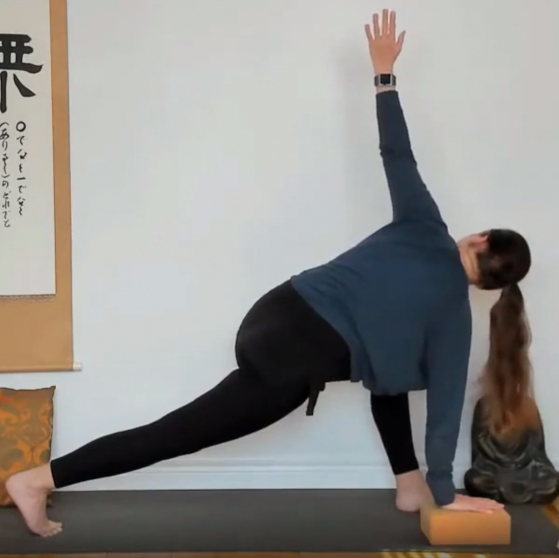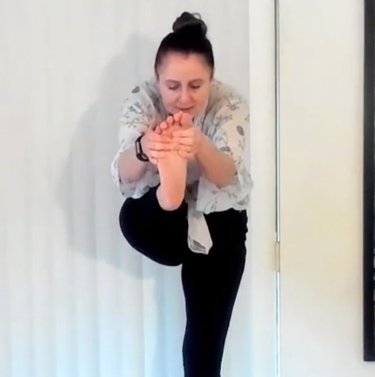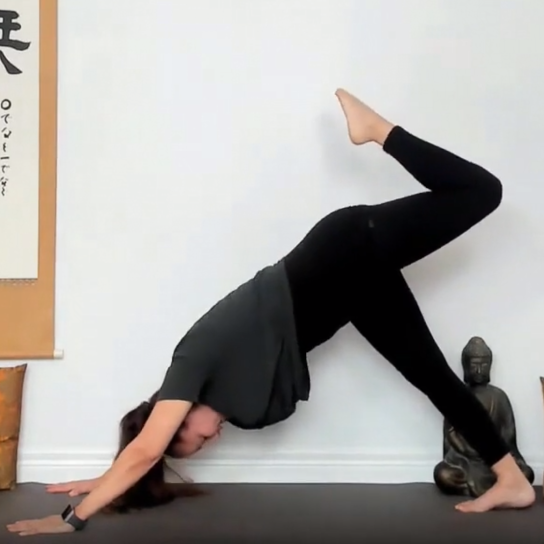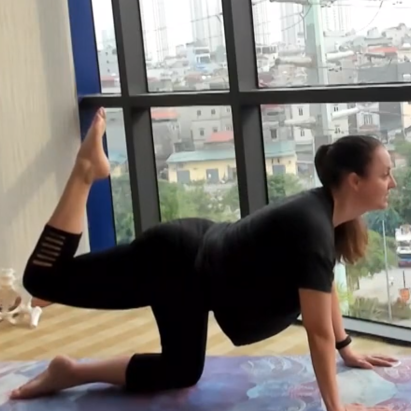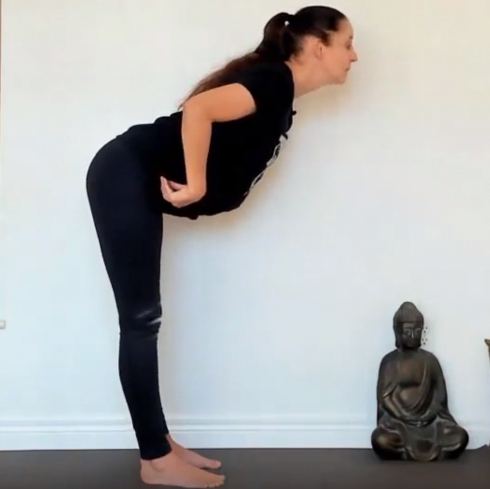Author: Todd
Want Stronger Bones? Do Yoga!
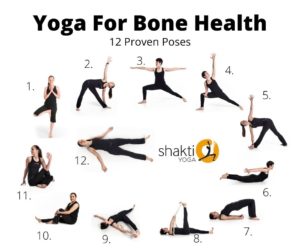 Feeling great is reason enough to do yoga, but happily this activity also comes with myriad proven health benefits.1 One of these is bone health. Yoga poses strengthen muscles. This puts stress on bones which stimulates extra calcium deposits, and enhances the action of bone-forming cells. The result is stronger denser bones.
Feeling great is reason enough to do yoga, but happily this activity also comes with myriad proven health benefits.1 One of these is bone health. Yoga poses strengthen muscles. This puts stress on bones which stimulates extra calcium deposits, and enhances the action of bone-forming cells. The result is stronger denser bones.
Maintaining bone health is important for every stage of life, however the older you are the more important it is to take part in activities that keep bones strong. Both men and women experience lower bone density as they age. After 50 over 55% have low bone density.2 Women have the added impact of lowering estrogen levels which impact on bone density.
Standing yoga poses like Warrior one and two strengthen the legs and hips. Upper body weight bearing poses like Downward Dog and others impact on the muscles and bones of the wrists, arms and shoulders. Back bends like Cobra and Locust pose are accessible to most and impact on the bones of the spine. An additional benefit of yoga is the balance and co-ordination that it develops. This helps prevent falls that may be the cause of fractures, especially in older adults.
Ideally we do yoga to prevent bone loss but what if you have already experienced bone density loss? Can yoga help you regain it? Studies indicate that it can. One such study found that 12 minutes of yoga daily can reverse bone loss, specifically in the spine and femurs.3 Another study demonstrated that yoga can effectively build bone mineral density after menopause.4 These benefits did not require rigorous training. Both studies had participants hold ten to twelve common yoga poses for about 30 seconds each daily. This means that you can maintain or improve the health of your bones with less than 15 minutes of yoga daily.
I have also personally had students with bone loss connect with me after finding their bone density had increased after starting our yoga sessions. Here is a letter I received from a student in my hatha yoga class
Hi Bobby, My tests have shown that my bone density has increased at an amazing rate since I started yoga. I don’t know if it is coincidence as there are other factors to consider but my results have moved from osteopenia to normal in my hip, and from osteoporosis to osteopenic in my spine. I have had 4 bone density scans in my life and this recent improvement was considered drastic! My doctor described my results as stark improvement!
-Carol T, St. John’s Yoga Practitioner
If you would like to try the poses used in the study above for yourself follow the list provided below.
1.Tree 2. Triangle 3. Warrior Two 4. Side Angle 5. Twisted Triangle 6. Locust Pose 7. Bridge 8. Lying hand to foot 9. Lying hand to foot with Foot to side 10. Seated twist (One leg straight) 11. Seated twist (both legs bent) 12. Corpse pose
Simply hold each pose for 30 seconds as you continue to take deep breaths. Pause for a few seconds and then move on to the next pose. Use blocks if needed to ensure poses are comfortable as you hold. If you would like to join a class for motivation, or to be sure you are aligning correctly in the poses contact me at Bobby@ShaktiYogaMethod.com.
Sources:
1. www.hopkinsmedicine.org/health/wellness-and-prevention/9-benefits-of-yoga
2. Osteoporosis: epidemiology, diagnosis and treatment. South Med J. 2000;93(1):2–18.
3. Twelve-Minute Daily Yoga Regimen Reverses Osteoporotic Bone Loss, Yi-Hsueh Lu, PhD, Bernard Rosner, PhD, Gregory Chang, MD, PhD, and Loren M. Fishman, MD, B Phil (oxon.)
4. Fishman, Loren M. MD, BPhil(Oxon) Topics in Geriatric Rehabilitation: July 2009 – Volume 25 – Issue 3 – p 244-250 doi: 10.1097/TGR.0b013e3181b02dd6
Want Strong Bones? Do Yoga
A Pose Series Proven to Increase Bone Density
Feeling great is reason enough to do yoga, but happily this activity also comes with myriad health benefits.1 One of these is bone health. How does yoga strengthen your bones? Yoga poses strengthen muscles. This puts stress on bones which stimulates extra calcium deposits, and enhances the action of bone-forming cells. The result is stronger denser bones.
Maintaining bone health is important for every stage of life, however the older you are the more important it is to take part in activities that keep bones strong. Both men and women experience lower bone density as they age. After 50, over 55% of people have low bone density.2 Women have the added impact of lowering estrogen levels which impact on bone density.
Standing yoga poses like Warrior One and Two strengthen the legs and hips. Upper body weight bearing poses like Downward Dog and others impact on the muscles and bones of the wrists, arms and shoulders. Back bends like Cobra and Locust pose are accessible to most and impact on the bones of the spine. An additional benefit of yoga is the balance and co-ordination that it develops. This helps prevent falls that may be the cause of fractures, especially in older adults.
Ideally we do yoga to prevent bone loss but what if you have already experienced bone density loss? Can yoga help you regain it? Yes! Studies indicate that a daily yoga practice can help regain lost bone density. One such study found that 12 minutes of yoga daily can reverse bone loss, specifically in the spine and femurs.3 Another study demonstrated that yoga can effectively build bone mineral density after menopause.4 These benefits did not require rigorous training. Both studies had participants hold ten to twelve common yoga poses for about 30 seconds each daily. This means that you can maintain or improve the health of your bones with less than 15 minutes of yoga daily.
I have personally had students with bone loss connect with me after visiting their doctors and learning their bone density had increased after starting our yoga sessions. Here is one such letter I received from a student in my mixed level hatha yoga class.
Hi Bobby, My tests have shown that my bone density has increased at an amazing rate since I started yoga. I don’t know if it is coincidence as there are other factors to consider but my results have moved from osteopenia to normal in my hip, and from osteoporosis to osteopenic in my spine. I have had 4 bone density scans in my life and this recent improvement was considered drastic! My doctor described my results as stark improvement! – Carol T, St. John’s Yoga Practitioner
Follow the pose order of the images in this post if you would like to try the poses from the case study above. Simply hold each pose for 30 seconds as you continue to take deep breaths. Pause for a few seconds after each pose before moving on to the next pose. Use blocks if needed to ensure poses are comfortable as you hold. This is a great start for a home practice. If you would like to be sure you are aligning correctly in the poses, or would enjoy the support of a yoga community, join me in one my upcoming beginner or mixed level hatha yoga classes on Monday or Tuesday evenings. Class info at www.ShaktiYoga.ca or contact me at Bobby@ShaktiYoga.ca.
Sources:
1. www.hopkinsmedicine.org/health/wellness-and-prevention/9-benefits-of-yoga
2. Osteoporosis: epidemiology, diagnosis and treatment. South Med J. 2000;93(1):2–18.
3.Twelve-Minute Daily Yoga Regimen Reverses Osteoporotic Bone Loss, Yi-Hsueh Lu, PhD, Bernard Rosner, PhD, Gregory Chang, MD, PhD, and Loren M. Fishman, MD, B Phil (oxon.)
4. Fishman, Loren M. MD, BPhil(Oxon) Topics in Geriatric Rehabilitation: July 2009 – Volume 25 – Issue 3 – p 244-250 doi: 10.1097/TGR.0b013e3181b02dd6
Healing and Appreciating… With a Little Help From the Ancestors
Musings Inspired by Pitru Paksha (The Hindu Period of Ancestor Worship)

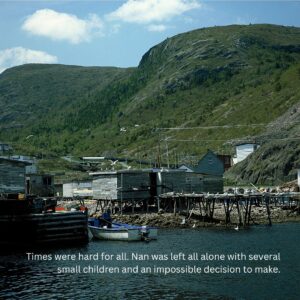 My mom called me today with a camping update. She was excited to have spent the night sleeping next to the grave of an ancestor. It was a whimsical act born of a passing comment from a local that her cousin had been buried in that area a number of generations ago. Upon learning this, my mom immediately rounded up an elderly resident who had been shown the burial area by his grandfather years ago. Together they approximated the burial spot to an overgrown bramble. She felt compelled to camp as close as possible for no obvious reason.
My mom called me today with a camping update. She was excited to have spent the night sleeping next to the grave of an ancestor. It was a whimsical act born of a passing comment from a local that her cousin had been buried in that area a number of generations ago. Upon learning this, my mom immediately rounded up an elderly resident who had been shown the burial area by his grandfather years ago. Together they approximated the burial spot to an overgrown bramble. She felt compelled to camp as close as possible for no obvious reason.
As I thought about what might have drawn her to spend the night with a cousin who had long passed I remembered that it is now the period of Pitru Paksha (fortnight of the ancestors). A Hindu practice where ancestors are remembered, prayed to and for, consulted, and appeased. In 2024 this period starts on September 18th. This is a time to contemplate the contributions and sacrifices of those who came before us, to cultivate gratitude, and receive insight that will help us live a better life. We pray for their peace and ask for their help as we invoke their presence.
Given that I am not Hindu, if you are interested in learning more about this sacred time of worship I suggest that you consult Hindu texts, or seek clarification from someone who is of this faith. My understanding would be of a surface depth at best. I am grateful however for Pitru Paksha, and similar ancestor practices from a number of traditions, that remind me to pause and create space for those who have paved the way for my own time on this earth.
Many philosophies teach that imbalance in our internal and external worlds may be the result of an unresolved relationship with an ancestor. In the book It Didn’t Start With You, Mark Wolynn explores the many ways that family trauma may be passed on and expressed in unhealthy cycles of emotion and action. Wolynn explores genetic studies showing physiological and emotional PTSD characteristics passed on to children who were not conceived when traumatic events occurred. In addition to genetic changes, social interactions and family culture can also unwittingly pass on unresolved emotions from one generation to another.
Wolynn suggests reflecting on repeated language habits and expressions in our core language during challenging times. To look into the places in our lives where intentions are at odds with actions. Maybe our behaviors are sometimes irrational because they didn’t start with us.

Holidays such as Pitru Paksha inspire me to contemplate the lives of family members such as my late grandmother. Her first husband, at a young age, died suddenly from a massive heart attack as he was walking through town. This left her in complete poverty with a house full of young children. Various receptive families “adopted” her children and she moved to a neighboring town to be a servant girl to “earn her keep”. No connecting roads meant that regular (if any) contact with her young children was impossible. As a mother I feel sick and breathless when I think of what she must have endured. The unimaginable and heart piercing sorrow of dropping off sobbing children one by one to households that would probably be extending lukewarm welcomes at best given that they were all struggling with the sustenance maintenance existence that was the norm at the time. My Nan eventually met another man (my grandfather) and started a new family. I never heard her speak of this part of her first family experience.
I am wondering if my mother was called by my late cousin to sleep in close proximity of her grave for such a healing session. Maybe this cousin from our past had a message to share, a gift to give, or a request to make.
With a couple more days of Pitru Paksha remaining I invite you to spend some time with your ancestors. We are at the end of a long line of genes, experiences, loves, hurts, and accumulated wisdom. In whatever setting or ritual that works for you I implore you to listen to their whispers, send them love, and ask them for direction.
It might be helpful to draw a family tree and note anything you know about each person’s life that stands out. Then close your eyes, focus on your breath, and create space for flow. This is not an intellectual process. Resist choosing a specific person. Wait for your body and heart to be touched by an ancestor, maybe someone from the family tree you drew, or possibly someone else who simply sensed that now is a time for valuable connection. Journaling your experience afterwards can help to reinforce insights and explore meaning.
I am tempted to end by saying something like “Happy Pitru Paksha” but I have no idea if people actually say things like that on Pitru Paksha so I will instead wish you a powerful and fulfilling visit with whomever answers the prayer of your soul.
